GARDEN AROMATICS
Some Good, Some Not So Good
One of gardening’s pleasures — for me, at least — is that it makes scents. Ha, ha. But seriously, wave after wave of scent has wafted across my terrace since the garden awakened in early spring. Back then, the most prominent aromas were from daffodil blossoms, followed by those of plum, clove currant, Koreanspice viburnum, and then dame’s rocket.
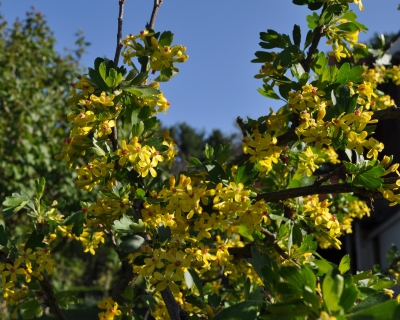
Clove currant
Olfactory pleasures, like the other sensual pleasures that flowers afford us, are incidental to the flowers. Evolutionarily speaking, we don’t return the favor with anything more than the carbon dioxide that we — and other animals — exhale.
Rather than smelling pretty for us, flowers do so to attract pollinators. As such, floral aromas might mimic countless other kinds of aromas, depending on just what creature a particular flower is trying to attract.
Because floral aromas are not floating around to please us, not all of them please our noses. Skunk cabbage is a good example, but there are much worse — or better — examples.
Arum lilies, for instance — botanically, species of Amorphophallus, the name from ancient Greek meaning misshapen penis. From its spathe, a spikelike inflorescence of many small flowers rises up from what looks like an upended purple skirt broadcasting the smell of rotting flesh. This aroma is just the ticket for attracting the carrion beetles that pollinate this plant. Heat generated inside the inflorescence heightens the morbid effect, besides helping pump the aroma out into the atmosphere.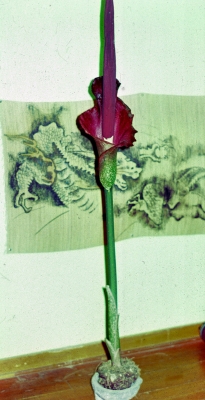
(I grow this plant for its stem, which has markings like a snake, topped by three large leaves that radiate out in a circle.)
Insect Pleasures
On to more pleasant aromas . . . to flowers that mimic pheromones, which are scents that female animals give off to signal their readiness to mate. Sorry, these ersatz pheromones coming from flowers won’t help a Cassanova. These scents are directed at insects, because insects are the creatures that the flowers want to attract to perform pollination.
Still, in old Persia the delicious perfume of Elaeagnus blossoms was said to have a powerful effect on a woman’s emotions, so much so that husbands reputedly locked up their wives while the trees were in bloom. One member of this genus reviled for its invasiveness, autumn olive, lines portions of the rail trail behind my garden; it made for a heady experience biking when it was in bloom three weeks ago.
Of course, more of a draw than merely scent is needed to keep an insect on a flower. So the mirror orchid deceives male bees that pollinate it by not only smelling like a receptive female, but also by looking like one. The attractiveness of the ersatz pheromone is made all the more apparent by the ready suitors that will cluster around a blossom, even if it is experimentally hidden from view by a cloth covering.
After one or two flowers, any smart bee is going to get the hint that he’s not dealing with a real female, and give up his efforts. To keep up the deception, each mirror orchid plant does not smell exactly alike, so it takes a half dozen or so plants before a bee catches on, and by then the flowers have got what they wanted. Not so the bees; Nature can be cruel!
Even more intricate in its deception is the bucket orchid of Central America, which splays out little “buckets” filled with a quarter inch depth of perfumed liquid. Each of the twenty or so species of this plant fills its bucket with a scent that varies slightly — although the differences are undetectable to us humans — according to the species of iridescent bee it means to attract. In the flurry of activity around a bucket, an occasional bee falls in. As the bee squeezes out through a narrow tube, the only route out of the bucket, it incidentally pollinates the orchid flower.
My Pleasure Also
Even now, with the wave of early spring flowers just a memory, the garden still makes scents.
Last week, the sweet aroma from just a few black locust trees drifted a couple of hundred feet across my meadow to make working outdoors all the more pleasurable. 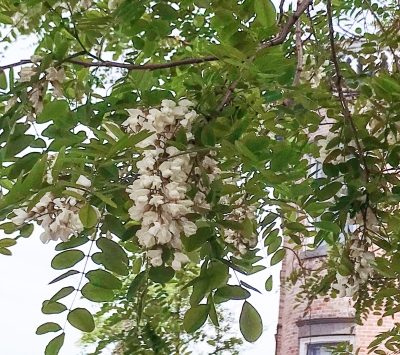 And then a few days ago, the clean, citrus-y aroma from a mockorange shrub greeted me at the door to the greenhouse. Walking back towards the house, it was the bubble gum aroma from bearded irises near the terrace that caught my nose. As much as I love that smell, it demands sticking your nose close to the blossom, a good thing because it might not be as welcome if it was more pervasive.
And then a few days ago, the clean, citrus-y aroma from a mockorange shrub greeted me at the door to the greenhouse. Walking back towards the house, it was the bubble gum aroma from bearded irises near the terrace that caught my nose. As much as I love that smell, it demands sticking your nose close to the blossom, a good thing because it might not be as welcome if it was more pervasive.
I mentioned earlier that floral scents often mimic insect pheromones, but perhaps something more than good aromas is what makes them appealing to us humans. So many things in nature smell like each other that perhaps some insect pheromones in those floral scents are also human pheromones. Could that be why we humans have gone to such great efforts trying to capture, in a bottle, these aromas?
The first essential oil, attar of rose, was bottled up by the Arabian physician Avicenna about a thousand years ago. Two hundred years later, Eleanore of Aquitaine had twenty-five hundred pounds of violets crushed to make one pound of violet attar, an extravagance even for a queen. That pound of violet attar would soon go rancid, prompting humans to learn to better preserve a scent by combining it with a fixative. Fixatives originally were musk extracted from the genital area of deer and ambergris from sperm whales; now synthetics are also used.
As an alternative to the elaborate extraction and fixing of floral aromas, I plant fragrance. As I write, David Austin rose varieties Dame Judy Dench and Queen Anne are blooming and will share their scent if I move in close.
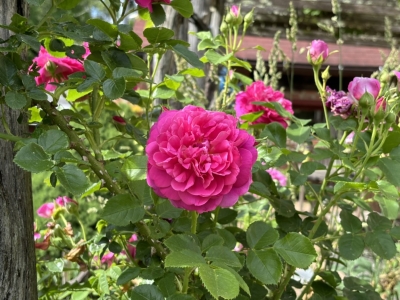
Queen Anne rose
The vining honeysuckle Scentsation, covered with yellow and white blossoms is a little more free with its fragrance.
Very free with her damask fragrance, and my favorite of all roses, is the very beautiful (also cold-hardy and pest-resistant) old fashioned Rose d’Ispahan, sometimes called Pompon des Princes or Isfahan. This rose was derived from or is the wild rose growing in a Persian garden, first introduced into the west in the early 19th century, and given to me by local herbalist Anne Solomon in the late 20th century.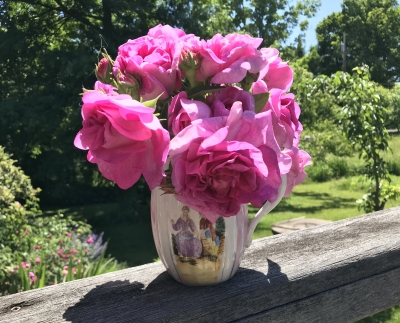
(This post was drawn in part from my book The Ever Curious Gardener: Using a Little Natural Science for a Much Better Garden.)
And more of Rose d’isfahan: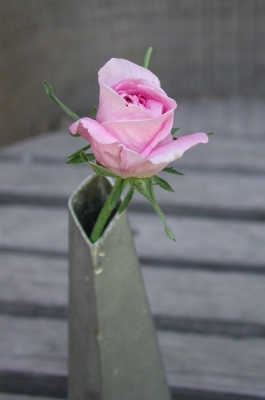
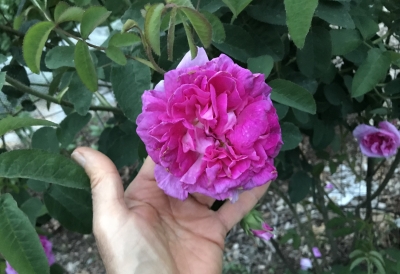


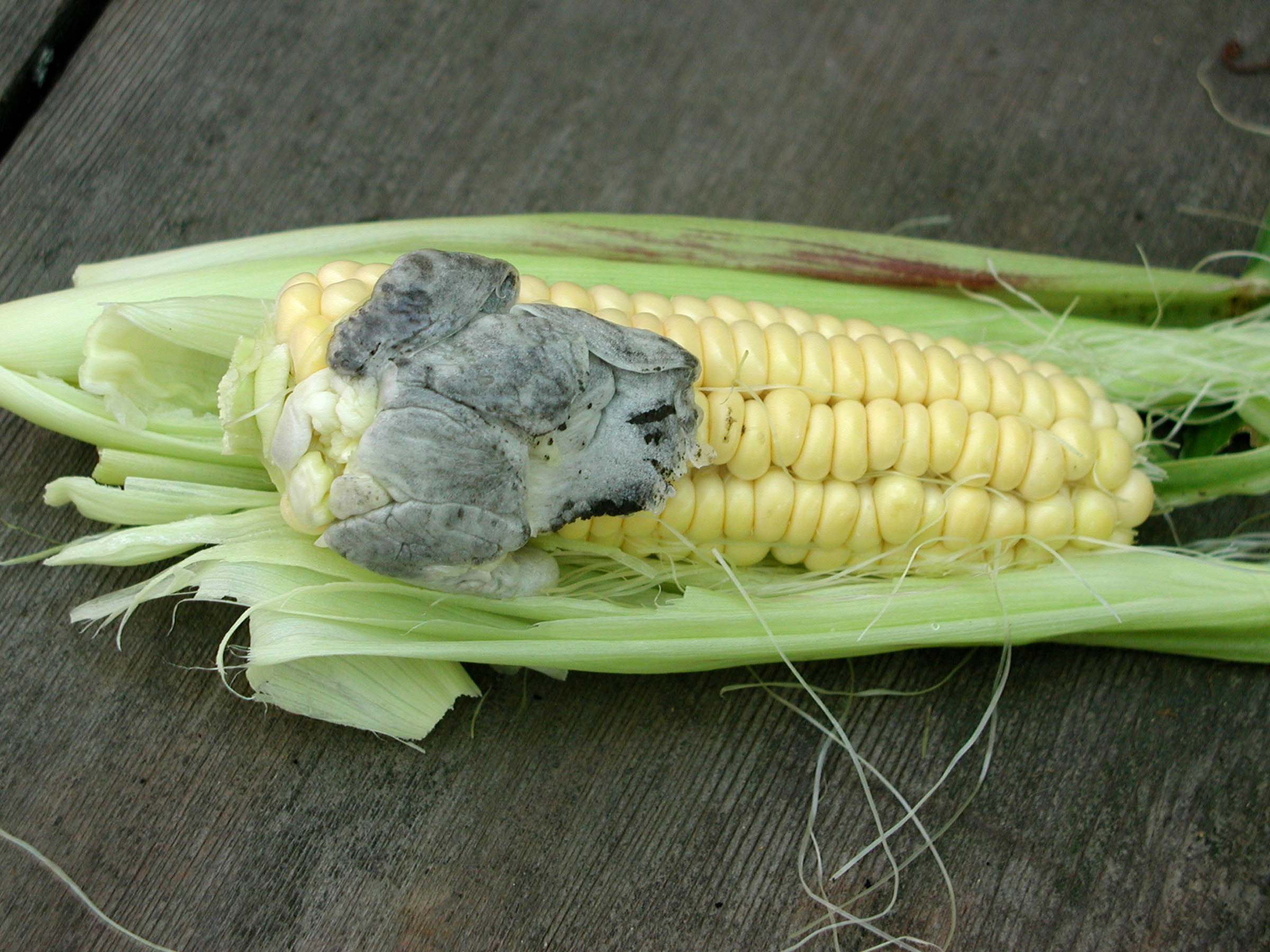
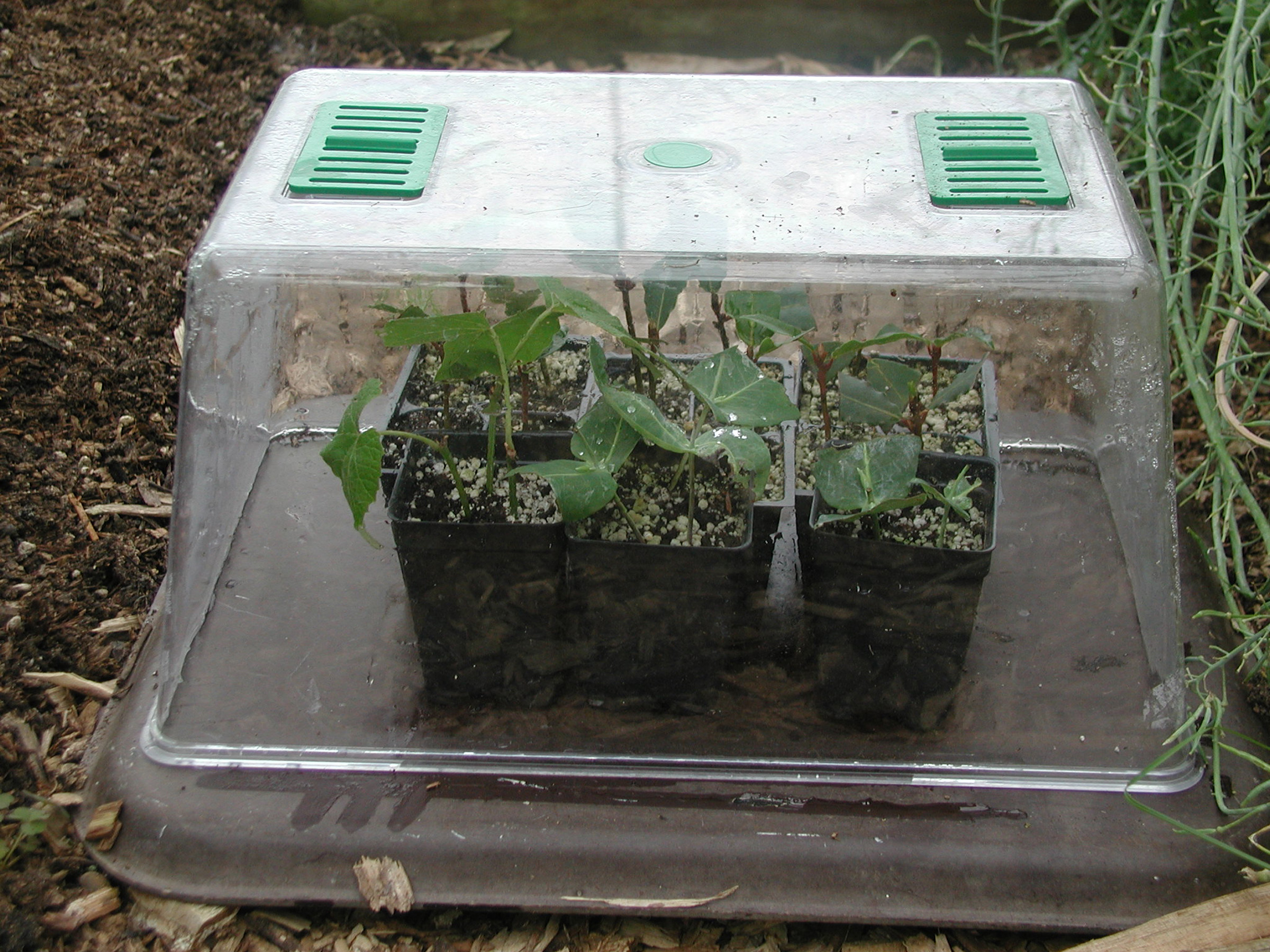
Repost this in January when we all need to remember that good things will come again.
🙂